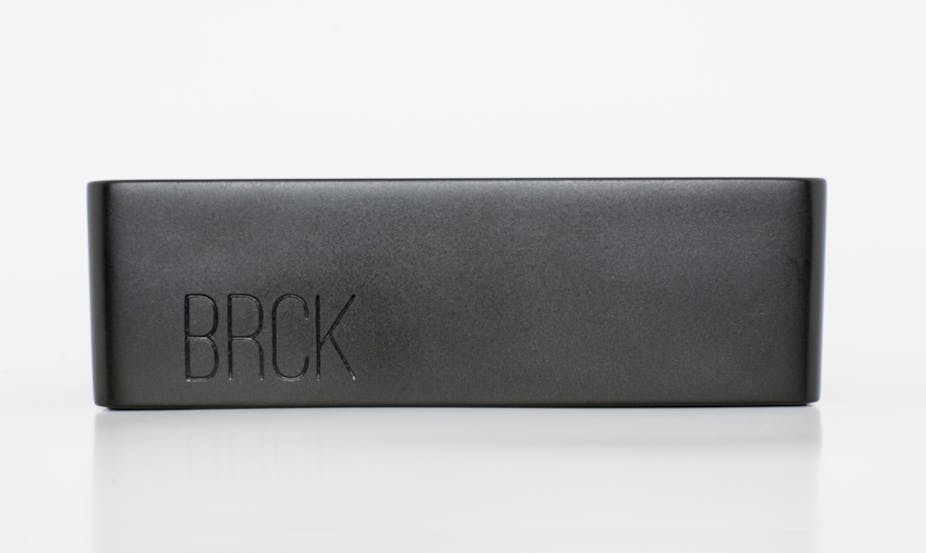The BRCK is, in a sense, just like the archetypal little black box. It does what you need and you don’t have to worry about its inner workings.
The team developing it has a simple aim – to extend and stabilise internet access in Africa. The plan is to keep people connected when the realities of weak infrastructure, such as regular power outages and a map of internet terrestrial cabling that looks like a colonial map of Africa circa 1800 – means that is by no means a given.
The BRCK is a ruggedised modem and wireless access point. It mops up power from mains or battery as required; it hops from Ethernet to wi-fi to 3G or 4G networks, depending on what is available. It can be configured and adapted remotely and has the potential to help solve problems across the continent and beyond, wherever continuous flows of information are required. It can help with systematically recording disease diagnoses or can trigger alerts when technologies such as water pumps fail.

In many respects the BRCK is the antithesis of Google’s Project Loon, which proposes to literally float an entirely new hi-tech infrastructure for Africa using an armada of balloons that bounce internet signals around. This is incredibly ambitious – possibly irredeemably so.
The BRCK is grassroots. It can be used to incrementally extend what connection is already there, black box by black box, access point by access point. But what is remarkable about the BRCK is not what it is or even what it can do, but how it came to be.
Silicon Kenya
Many western countries are trying to recreate the success of Silicon Valley on their own shores by investing in regions of hi-tech specialism. Despite arguments from mainly right-wing politicians that the state stifles entrepreneurship, there is considerable evidence to show the role of the state is crucial for real innovation.
What is happening in Kenya is different. A small cluster of incubation and innovation is emerging that relies on open source software, digital tools and technology such as the BRCK. It is happening below the radar of the state and perhaps even in spite of it.
In many ways it has to be so. The wherewithal of the state to provide the infrastructure, incentives and regulation necessary to support hi-tech innovation is limited. Kenya simply has other more pressing priorities.
Luckily, this is an industry that is not afraid to step up. Its genesis can be traced to the efforts of Erik Hersman, David Kobia and Juliana Rotich to build a crowdsourced platform, called Ushahidi (“testimony” in Swahili) to map post-electoral violence in Kenya in 2008. The platform led to the opening of the iHub in 2010, a non-profit innovation hub where programmers, entrepreneurs and investors can build capacity, communicate and collaborate.
The iHub is at the core of a range of partner initiatives, spinoffs and startups. Essentially, Kenya is building its cluster from the bottom up, expanding capacity as it goes. This is where the BRCK has been developed, and now similar hubs are being set up in neighbouring countries, such as Uganda.
Innovation needs investment and typically investment capital has been hard to come by in developing countries. But the BRCK has captured the imagination of crowdfunding enthusiasts. It rapidly exceeded its original kickstarter target and is now going through a round of attracting further investment. This new type of potentially more democratic, decentralised funding is vital in the absence of the sort of investment capital that can be found in wealthier countries.
Smartphone ownership in Africa is expanding rapidly, innovation and ideas are everywhere and there is limitless appetite for information about health, agriculture and development. But infrastructure is fraying around the edges long before it has even reached across the continent. There isn’t enough funding, it is difficult to source components and bring them back to Africa and there is a lack of experts to help out. BRCK and projects of its kind help generate a sense that these problems are surmountable by Africans, using African developed technology.

